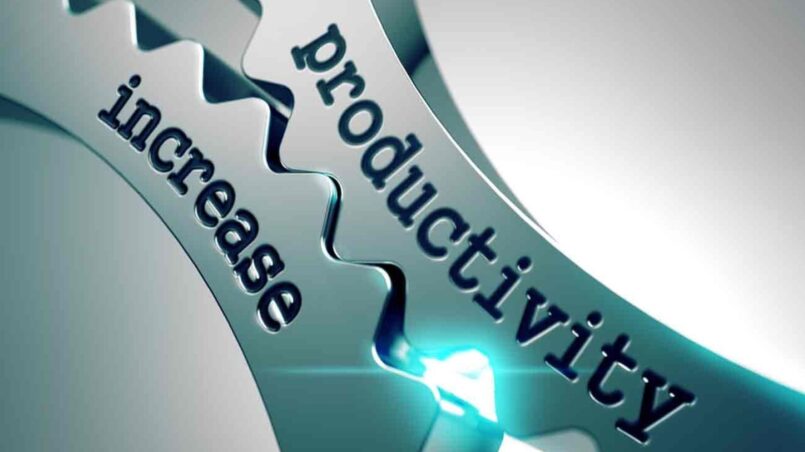Share this
In today’s fast-paced world, maintaining focus is crucial for achieving personal and professional success. The ability to How To Start Up Your Focus Engine concentrate deeply on tasks can set you apart and propel you toward your goals. This article explores how to “start up your focus engine,” a concept that combines strategies and tools to boost your concentration and productivity. By How To Start Up Your Focus Engine understanding and applying these principles, you can enhance your performance and make the most of your time. Dive in to discover practical steps and techniques that will help you build a powerful focus engine and unlock your full potential.
Understanding the Focus Engine
To harness the power of your focus, it’s essential How To Start Up Your Focus Engine to first understand what a “focus engine” is and how it functions. This section delves into the components of a focus engine and how it can drive productivity.
Definition and Components of a Focus Engine
How To Start Up Your Focus Engine is a metaphor for the system of strategies, habits, and tools that work together to enhance your concentration and efficiency. Just like a real engine, it requires regular maintenance and fine-tuning to operate at its best. The key components of a focus engine include:
- Mental Framework: This is the mindset you bring to your tasks. It involves having a clear understanding of your goals, maintaining a positive attitude, and staying motivated. A well-defined mental framework helps you stay committed to your tasks and overcome distractions.
- Environmental Setup: Your surroundings play a significant role in your ability to focus. This includes organizing your workspace, controlling noise levels, and ensuring that your environment supports concentration. A clutter-free and comfortable workspace can reduce stress and enhance focus.
- Routine and Habits: Establishing a consistent routine helps train your brain to enter a focused state more easily. This involves creating a daily schedule that prioritizes high-focus tasks and incorporates breaks. Regular habits like planning your day and setting specific goals can streamline your workflow.
- Tools and Techniques: Various tools and techniques can support your focus efforts. These might include productivity apps, time management techniques, and focus-enhancing methods. For example, techniques like the Pomodoro Technique or using task management apps can structure your work and break tasks into manageable chunks.
- Health and Well-being: Physical and mental health are crucial components of an effective focus engine. Adequate sleep, proper nutrition, and regular exercise contribute to cognitive function and overall well-being. Managing stress and maintaining mental clarity are essential for sustained focus.
How a Focus Engine Can Enhance Productivity
A well-tuned focus engine boosts productivity by:
- Improving Efficiency: By minimizing distractions and creating a structured environment, you can work more efficiently. When your focus is sharp, you complete tasks faster and with higher quality.
- Enhancing Motivation: A focus engine helps maintain motivation by setting clear goals and providing a structured approach to achieving them. This clarity and organization make it easier to stay on track and progress toward your objectives.
- Reducing Stress: A well-maintained focus engine reduces the cognitive load of managing tasks and priorities. When you have a system in place, you spend less time worrying about what needs to be done next, which lowers stress levels.
- Facilitating Better Decision-Making: Focus enables you to think more clearly and make better decisions. With a well-functioning focus engine, you can analyze situations more effectively and choose the best course of action.
Identifying Your Focus Needs
Before you can build an effective How To Start Up Your Focus Engine, you need to assess your current focus levels and set specific goals. This process involves understanding where you stand and where you want to be in terms of productivity and concentration.
Assessing Your Current Focus Levels
- Self-Reflection: Begin by evaluating how well you currently manage your focus. Ask yourself questions like:
- How often do I get distracted during work?
- Do I struggle to complete tasks on time?
- How easily do I get back on track after interruptions?
- Track Your Time: Keep a time log for a week to see how you allocate your work hours. Note when you feel most productive and when distractions tend to occur. Tools like time-tracking apps or simple spreadsheets can help in this analysis.
- Identify Distractions: List common sources of distraction, such as social media, email notifications, or a noisy environment. Understanding what pulls you away from your tasks is crucial for developing strategies to address these distractions.
- Evaluate Task Management: Assess how effectively you manage your tasks. Are you overwhelmed by a long to-do list? Do you frequently miss deadlines or forget important tasks? Identifying these issues will help you understand the gaps in your current focus system.
Setting Specific Focus Goals and Objectives
- Define Clear Objectives: Based on your self-assessment, set specific, measurable goals for improving your focus. For example:
- Reduce time spent on social media during work hours by 50%.
- Increase uninterrupted work periods from 30 minutes to 60 minutes.
- Prioritize Goals: Determine which areas of focus are most important to address first. Prioritizing goals can help you concentrate on the most impactful changes and make incremental improvements.
- Create Actionable Plans: Develop a step-by-step plan for achieving your focus goals. This might include:
- Establishing a designated work area with minimal distractions.
- Implementing time management techniques such as the Pomodoro Technique.
- Setting specific times to check and respond to emails.
- Establish Benchmarks: Set milestones to track your progress. For example, aim to achieve a specific focus goal within one month and assess your performance. Regularly reviewing your progress helps you stay on track and adjust your strategies as needed.
- Seek Feedback: Consider getting feedback from colleagues or mentors about your focus and productivity. They might provide valuable insights into areas you might overlook and suggest additional improvements.
Creating a Focus-Friendly Environment
An optimal How To Start Up Your Focus Engine workspace is crucial for maintaining concentration and productivity. A well-organized and thoughtfully designed environment can significantly enhance your ability to focus. This section explores how to set up a focus-friendly environment by addressing both physical and digital aspects.
Organizing Your Workspace for Optimal Concentration
- Declutter Your Space: Start by removing unnecessary items from your workspace. A clutter-free environment reduces visual distractions and mental clutter. Keep only essential items within reach to maintain a clean and organized workspace.
- Ergonomic Setup: Invest in ergonomic furniture and equipment to ensure comfort and prevent strain. An adjustable chair, a desk at the right height, and proper monitor positioning can help maintain good posture and reduce physical discomfort.
- Optimize Lighting: Good lighting is essential for reducing eye strain and maintaining focus. Natural light is ideal, but if that’s not possible, use adjustable desk lamps with adequate brightness to ensure a well-lit workspace. Avoid harsh or flickering lights that can cause discomfort.
- Control Noise Levels: Minimize background noise to improve concentration. Consider using noise-cancelling headphones or playing ambient sounds like white noise or instrumental music to create a distraction-free environment. If you work in a noisy area, find ways to reduce or mask disruptive sounds.
- Personalize Your Space: Add personal touches to make your workspace more enjoyable and motivating. This could include inspirational quotes, a small plant, or a photo that brings you joy. Personalization can increase your connection to the workspace and boost your mood.
Minimizing Distractions and Interruptions
- Set Boundaries: Clearly communicate your work hours and focus periods to family members or roommates. Establishing boundaries helps prevent interruptions and ensures that you have dedicated time for uninterrupted work.
- Digital Distraction Management: Manage digital distractions by turning off non-essential notifications on your devices. Use apps or browser extensions that block distracting websites and limit your time on social media during work hours.
- Use a Do Not Disturb Mode: Utilize “Do Not Disturb” settings on your phone and computer during focus periods. This feature can help prevent interruptions from calls, messages, and notifications, allowing you to concentrate better.
- Organize Digital Files: Keep your digital workspace organized by creating a logical folder structure and regularly cleaning up unused files. An organized digital environment reduces time spent searching for documents and improves overall efficiency.
- Implement Focus Zones: Designate specific areas for different types of work. For instance, have a clear area for deep work, another for meetings, and a separate space for breaks. This zoning helps create a mental association between different types of tasks and environments.
Conclusion
Creating a focus-friendly environment is a crucial step in building a successful focus engine. By organizing your workspace, managing digital and physical distractions, and setting up an ergonomic and personalized area, you lay the groundwork for enhanced concentration and productivity. With a clear understanding of your focus needs and a thoughtfully designed environment, you can implement effective routines and habits that drive your success. Remember, maintaining a focus engine requires ongoing adjustments and improvements. By continually refining your strategies and staying committed to your goals, you will unlock your full potential and achieve greater efficiency in your work and personal life.
FAQs
- What is a focus engine?
- A focus engine is a metaphor for the system of strategies, habits, and tools designed to enhance your concentration and productivity. It includes your mental framework, workspace setup, daily routines, focus techniques, and overall health.
- How can I assess my current focus levels?
- Evaluate your focus by reflecting on your work habits, tracking how you spend your time, identifying common distractions, and assessing how you manage tasks. Tools like time-tracking apps and self-assessment questionnaires can be helpful.
- What should I include in a focus-friendly workspace?
- Your workspace should be decluttered, ergonomically set up, well-lit, and controlled for noise. Personalizing your space can also help make it more motivating and enjoyable.
- How can I minimize distractions and interruptions?
- Set clear boundaries with those around you, manage digital distractions by turning off non-essential notifications, use focus-enhancing tools and apps, and organize your digital files to reduce time spent searching for documents.
- What are some effective routines and habits for improving focus?
- Establish a consistent daily routine, use time management techniques like the Pomodoro Technique, set specific focus goals, and incorporate regular breaks into your schedule. Additionally, maintain a healthy lifestyle with proper sleep, nutrition, and exercise.
- How often should I review and adjust my focus strategies?
- Regularly review your focus strategies, ideally on a weekly or monthly basis. Track your progress, assess what’s working or not, and make adjustments as needed to continually improve your focus and productivity.
- What role does physical health play in maintaining focus?
- Physical health significantly impacts your ability to concentrate. Adequate sleep, balanced nutrition, and regular exercise contribute to better cognitive function and overall well-being, which enhances your focus and productivity.
- How can I stay motivated to maintain my focus engine?
- Set clear and achievable goals, track your progress, celebrate small victories, and periodically review your focus strategies. Staying motivated involves both maintaining a positive mindset and continually refining your approach to achieving your productivity goals.


